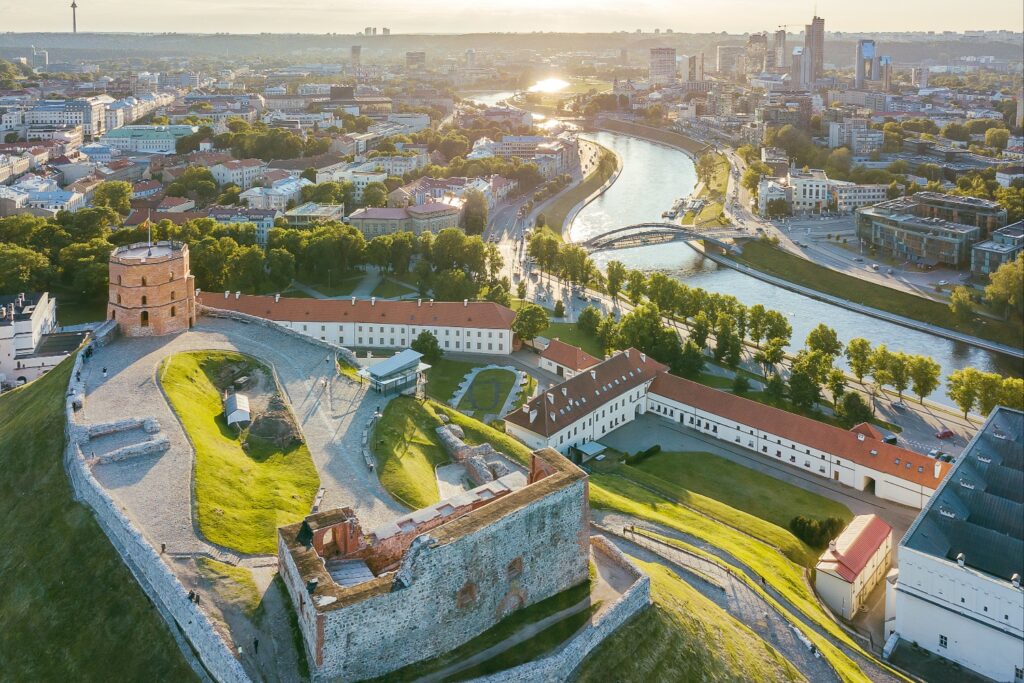
NATO has been traveling to an Integrated Air and Missile Defense (IAMD) for 30 years, but the Alliance has yet to reach its destination. In recent years the awakening to the realities of the threats posed by Russia has manifested itself noticeably, as the Alliance has clearly gained the courage, intelligence, and heart to recognize the tremendous importance of IAMD. This has resulted in the Alliance committing resources, developing capabilities, delegating increased authorities, and pursuing unprecedented levels of integration among and across member nations. To be sure, integrating sensors and effectors to provide comprehensive, 360-degree missile defense coverage to protect all of NATO from the full range of ballistic, cruise, and hypersonic missiles plus drones and other air-breathing threats is a massive undertaking, but as leaders convene in Vilnius for the annual NATO Summit, Secretary General Stoltenberg may have the destination in sight. Now is the time to take the final steps and enter the gates of that promised land.
Russia lies just 20 miles from Vilnius. She has launched more than 6,100 Missiles over the past year into Ukraine. Meanwhile, she continues to challenge NATO’s makeup, as she has done since its birth in 1949, including using the eastward expansion of the Alliance as justification for the illegal invasion of Ukraine. Her most recent actions resulted in the opposite of her intended effect. Rather than splintering the Alliance, NATO grew stronger and continued to expand, adding Sweden, as well as Finland, which shares an 832 mile/1340 kilometer border with Russia. Russia is weaker today because of her own poor choices, but she remains a strategic nuclear power and an extremely dangerous threat.
Against this backdrop, the road to a full holistic Integrated Missile Defense paved primarily with America’s resources and traveled by a coalition of the U.S. and willing NATO partners, the long-awaited dream of reaching the destination is finally attainable. Russia wields a deep arsenal of threats, from hypersonics to small drones and everything in between. The Russian terror campaign of targeting civilian infrastructure in Ukraine with their vast stockpile of ballistic and cruise missiles has awakened the Alliance. To fend off Russia’s expansion into Ukraine and future expansion now is the time for NATO to come together as never before.
The coalition of the willing within NATO is on full display this week in Vilnius. Germany deployed twelve Patriot missile launchers, Spain brought a NASAMS battery, France sent Caesar self-propelled howitzers, France, Finland, and Denmark are basing military jets in Lithuania, and the United Kingdom and France are supplying anti-drone capabilities. Vilnius is well defended.
The path to Vilnius 2023 began in 2002 when the United States withdrew from the ABM treaty and introduced the deployment of missile defense in Poland and the Czech Republic. At the 2010 Lisbon summit, President Obama convinced European allies to join the US in building an integrated air defense network and architecture. The intent of the European Phased Adaptive Approach (EPAA) was for allied European and American upper tier missile defense systems to have an interoperable command and control C2 structure to defend against Iranian Ballistic Missiles. Unfortunately, this singular focus on the Iranian threat and upper tier left the entire Alliance vulnerable to the Russian 360 degree missile threat from all tiers.
Russia took notice of NATO’s lack of layered air defense and, emboldened by her success in Georgia and the initial 2014 Invasion of Ukraine, felt she could get away with a bigger operation in 2022. NATO did not have the courage to stand up to Russia and that has come back to haunt the Alliance. NATO members must put their collective intellect and operational prowess together to develop a stronger, integrated air and missile defense system for the whole of the Alliance. The Alliance must commit to standing united as one team in the face of Russia’s attacks.
To be sure, NATO has awakened and has developed threat based plans to holistically drive the collective demand signal for IAMD. The challenge is the length, the curves, and the final obstacles on the IAMD road that must be overcome to make these final, most meaningful steps. The final stretch will require significant investment and commitment to a comprehensive IAMD plan at Vilnius. MDAA Board member Mark Montgomery made a clear and convincing case for keeping Air Defense at the top of NATO’s Agenda in Vilnius. Leaders should heed his sage advice.
The period between the fall of the Soviet Union and the resurgent aggression of Russia was a reset era misinterpreted by NATO and taken advantage of by Russia. Now is the time for Secretary Stoltenberg to take that crucial final step and lead the Alliance. Now is the time to finish this crucial job – this critical journey – to secure NATO for the foreseeable future. Now is the time to rally willing members of NATO to bring native IAMD systems into an open architecture and integrated framework. Now is the time to shift the strongest components of NATO’s IAMD architecture east, rather than rely on rotational deployments through eastern member states, demonstrating a sustained commitment in the face of Russia’s continued taunting.
“We must continue this momentum and maintain our strength and unity. This is exactly what NATO leaders will do when we meet for our summit in Vilnius tomorrow. I expect NATO allies to confirm our unwavering support for Ukraine, continue to strengthen our own defense and increase our cooperation with our European and Indo- Pacific partners to defend the global rules-based order. These are my main priorities for Vilnius and beyond, as I have the honor to serve this alliance for another year.
What we do—or do not do—now will define the world we live in for generations. So we will send a clear message: NATO stands united, and authoritarian aggression will not pay off.”
